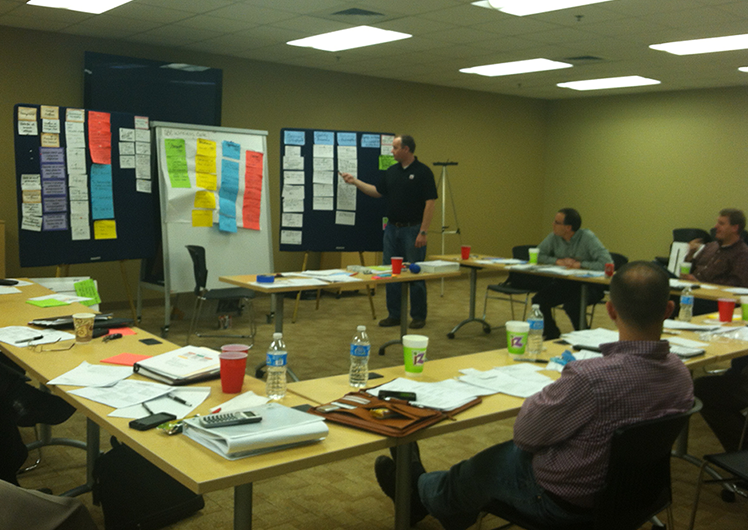Performance or Purpose
Performance or Purpose
 About a month ago, an organization in the utility industry experienced the accidental death of an employee, a young husband with two children. Attending the funeral of a team member amid the stress of the pandemic was about all the people in this organization could take. To make matters worse, a hurricane hit in the Gulf of Mexico. It did not hit them, but as a good neighbor of the company impacted by the storm, this organization was expected to and had always rallied their resources to assist in this type of emergency. But this time, the CEO said no, it was just too much. He felt the stress they were experiencing could distract workers even more, and another accident could quickly occur. He announced this to his team as they stood silent.
About a month ago, an organization in the utility industry experienced the accidental death of an employee, a young husband with two children. Attending the funeral of a team member amid the stress of the pandemic was about all the people in this organization could take. To make matters worse, a hurricane hit in the Gulf of Mexico. It did not hit them, but as a good neighbor of the company impacted by the storm, this organization was expected to and had always rallied their resources to assist in this type of emergency. But this time, the CEO said no, it was just too much. He felt the stress they were experiencing could distract workers even more, and another accident could quickly occur. He announced this to his team as they stood silent.
The next day, however, a member of the team came to see the CEO. He said he understood and appreciated his concern. Then he said, “But we need to do this. This is who we are. Please let us go.” The CEO thought for a while and then said OK.
The organization pulled together and rallied to see them off. The emergency rescue effort was a success. The workers all made it safely home. The CEO’s intentional step of refocusing on their purpose helped the organization begin to heal its wounds as each employee regained her or his purpose by doing their best work. Productivity is now at its highest peak in years, as together, they all are on purpose, serving others with their skills and talents. I call this Purpose Management.
Go for purpose, and you get performance thrown in. Go for performance, and you get neither.
Performance Management System Paradox
Why would an organization continue to use a system that employees loathe, the majority of managers don’t see value in, and on average a manager spends about 210 hours—close to five weeks—doing each year? Add to that, this system seldom, if ever, has the intended result of forcing poor performers to become more accountable.
Why?
The answer involves control, fear, and avoidance. Many managers think that their job is to control people and make results happen rather than inspire people to want to make results happen. There is a fear of confronting a poor performer and speaking the truth to her or him or hurting someone’s feelings. So, we rate a person on a numerical scale, which typically helps avoid a time-consuming awkward conversation, and doing it annually lessens the frequency of this discomfort. Because once an employee sees their force-ranked number or grade, the exchange becomes either too optimistic, somewhat threatening, or mid-range apathetic.
Albert Einstein once said, “The definition of insanity is doing the same thing over and over again but expecting different results.” Surprisingly, leaders in organizations keep doing force ranked Performance Management over and over again, in different variations or flavors, with the same disappointing outcome. Is there a better way?
“The ox you are searching for might be the one on which you are sitting.” Ancient proverb
Pandemic Silver Lining
Over the past six months, most organizations have not held formal performance reviews, but in many places, teamwork, collaboration, and quality performance have reached the highest levels in years. The Mckinsey and Company Short List Report of September 2020 stated, “One silver lining of the COVID-19 crisis has been to show businesses how to manage better and achieve greater speed, quality, and cost control. A wartime mindset—defined by decisive crisis management, scenario planning, and a human reflex attuned to the economic and health shocks affecting employees—has been the hallmark of leaders in the crisis so far. Now, as the world feels its way toward recovery and the new opportunities of the next normal, another risk looms. It is that inertia will set in, along with a longing for a return to the performance management based operating style of the days before COVID-19.”
Not all leaders in organizations experienced notable increases in productivity. Still, it is clear that the leaders of the organizations who have excelled had one thing in common; they are consistently reminding employees of the purpose of their organization and are trusting employees to manage themselves. Either by design or default, they empower people to act independently without the business-as-usual management controls and get their job done. This was driven by each team member’s values and purpose that aligned with their organization’s vision, not by a micromanaging boss or a bad or good performance appraisal. The secret sauce was a steady and straightforward recipe of coaching, caring, and reminding people that we need each other to get through this. Could this discovery open up a conversation about the idea that Purpose Management may produce better outcomes than Performance Management?
Purpose Management System Proposition
Why would an organization not build a system that employees will enjoy? One where managers have seen the value in and can spend one hour or so every two weeks intentionally and systematically reminding people of shared goals, then helping them see and apply their gifts and talents or redesign how they do the work they do so they can capitalize on innate abilities, instead of the manager spending five weeks of working on a report that drains the life out of all involved?
Why?
Because it is hard to do, and most people have never experienced intentional Purpose Management. It’s easier to shell out a mound of money to buy a benchmarked, peer-approved, complex Performance Management System. Seeing is believing, and most managers have never seen one. They read about this idea in the leadership book of the month but never observed this approach modeled by their manager or experienced a purpose-driven environment, or are equipped to facilitate Purpose Management conversation with their team members.
Journal Entry: Do you want to avoid the impulse to abandon the progress you’ve seen in your organization and team during the last six months ? If you’d like to hold on to your learning, here are 3 steps to consider:
1) Assess: Have your team discuss and note what worked well and what did not so work well over the past few months. Then decide on your top 3 takeaways.
2) Align: Based on your assessment in #1, identify what needs to stop, start or continue in your culture.
3) Assign: Decide if you will focus on Performance Management or Purpose Management. Then choose a champion to set up a system to experiment with your decision for a certain timeframe and evaluate.
If you desire a different outcome, try a different approach to get what you want in leadership and life.
On point > On purpose
Leadership and Life Journal: A new way to look at the important things you already know. Subscribe to Leadership & Life Journal.



